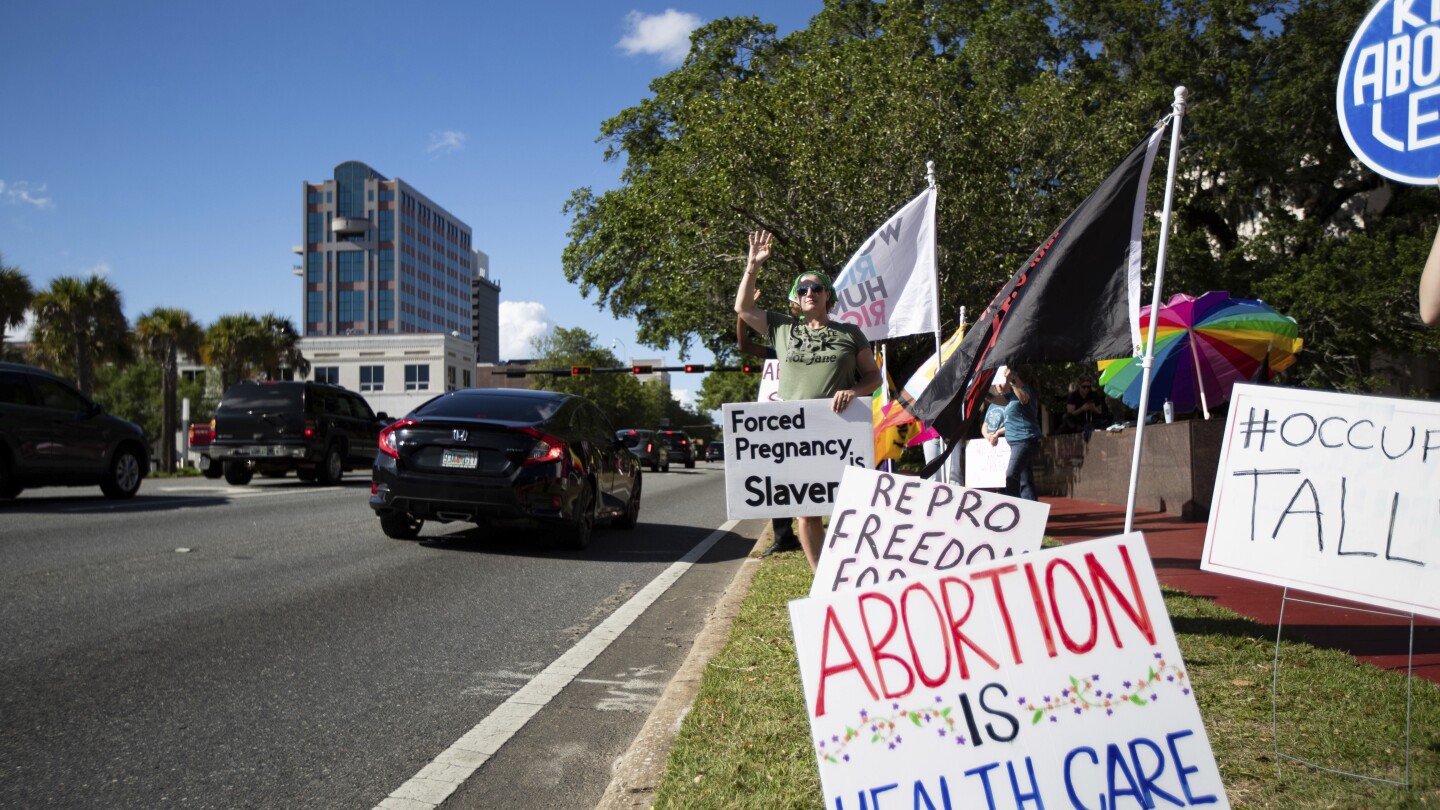When Florida’s ban on abortions after the sixth week of pregnancy began on May 1, the number of abortions didn’t drop as much as it has when other states implemented similar policies, a study released Thursday estimates.
The study by the Guttmacher Institute, a research organization that supports abortion access, suggests that Florida clinics, abortion funds and support networks were better prepared than their counterparts in other states to help women get abortions legally by detecting pregnancies earlier and using out-of-state telehealth pill prescriptions.
It’s the latest report to underscore that women are still finding ways to end their pregnancies despite two years of bans and restrictions in Republican-controlled states since the U.S. Supreme Court overturned Roe v. Wade and ended a nationwide right to abortion. Previous studies have found that the number of abortions nationally has risen slightly compared with the period before that ruling.
“An infrastructure of abortion funds and support organizations really has come into play to get patients to services as quickly as they can,” Guttmacher data scientist Isaac Maddow-Zimet said of the Florida findings.
Using a survey of brick-and-mortar abortion facilities as well as online prescribers, Guttmacher estimates that there were 30% fewer abortions in the state in May than there were on average for the first three months of the year, before an increase in abortions in April ahead of the new ban taking effect. In June, the number was slightly lower, at 35% fewer.
When similar bans kicked elsewhere, the number of monthly abortions fell more dramatically. It dropped by 45% in Georgia after its law took effect in November 2022, by nearly 80% in South Carolina, where it took hold in August 2023, and by about 50% in Texas after its law took effect in September 2021. Texas has since implemented a near-total ban on abortion. Iowa also has a six-week ban, but enforcement began only in July.
The availability of legally prescribed abortion pills in Florida and other states with bans is because some states with Democrats in charge of the governments have passed laws that allow providers to prescribe the pills via telehealth to patients in states with bans. One study found that by March — before the Florida ban took effect — the pills prescribed by telehealth providers in those states accounted for about one-tenth of the nation’s abortions.
The statutes, known as shield laws, have not yet faced a major test in court.
The Guttmacher survey includes those out-of-state prescriptions, but it doesn’t include people who received abortions outside of the formal medical system, such as by obtaining pills without a prescription.
Florida’s size and geography make it an important part of the abortion landscape. After Roe fell, strict bans — many of them barring abortion at all stages of pregnancy, with narrow exceptions — were implemented in most Republican-led states, including most of those in the South.
Florida had a new ban, too, but it was far more forgiving than most: It prohibited abortion after the first 15 weeks of pregnancy in most cases. Women from nearby states who could not legally obtain an abortion at home often traveled to Florida to get one. In 2023, about 1 in 11 abortions in Florida was for a patient who traveled from out of state, according to state data.
The six-week ban was adopted in 2023, and the state’s Supreme Court ruled on April 1 that enforcement could start in one month.
Bans everywhere affect people seeking abortions, but Florida has some added implications.
As the third-most populous state, it has more abortion-seekers than nearly anywhere else. And because of its geography, it is an 11-hour drive from Miami to the closest state that allows abortions later in a pregnancy, North Carolina. Even then, North Carolina has a 72-hour waiting period after a patient makes an in-person appointment before an abortion can proceed, making that an impractical destination for many Florida women, including those who might struggle to get enough time off work or arrange for several days’ of child care.
Michelle Quesada, a spokesperson for Planned Parenthood of South, East and North Florida, said the group’s clinics have been prioritizing getting patients appointments fast, especially if they’re close to the six-week cutoff, and cross-trained staff on ultrasounds to provide gestational dating as quickly as possible.
But she said there are still abortion seekers who are turned away. About 600 abortion seekers at the five abortion clinics in her group have gone to other states with the help of Planned Parenthood navigators. And she said that about 50 patients a week choose to self-navigate, possibly continuing a pregnancy they don’t want or obtaining an abortion outside a clinic.
She said one impact may be that some patients rush to have abortions that they may not have had with more time to think through their pregnancy options.
“Now you have patients coming to us at five weeks, five days,” she said, “and they literally have 24 hours to decide.”
Kelly Flynn, president and CEO of A Women’s Choice, which has abortion clinics in Florida, North Carolina and Virginia, said the number of abortions at her Jacksonville, Florida, clinic has dropped by at least half since the ban took effect — though those patients are often seen by the organization’s other clinics.
“This ban has been devastating and cruel for patients who have desperately needed access to safe abortion care,” she said. And Flynn said the abortion funds that help with travel logistics and funding are finding that they’re not as flush with donations as they were after Roe was overturned.
Florida is one of nine states where voters in November will decide whether to add the right to abortion to their state constitution. In Florida, the proposed amendment would require 60% support to pass.

